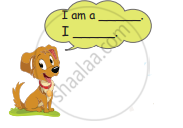Advertisements
Advertisements
प्रश्न
Narrate 'The Tale of Melon City' in your own words.
उत्तर
A model answer has been provided for students' reference.
It is strongly recommended that students prepare the answer on their own.
The Tale of Melon city is a narrative poem by Vikram Seth written in the couplet form. The poem is an account of an incident involving the monarch and citizens that took place in a city long ago. The tale is humorous with a very sharp focus on the thematic aspect. Structurally, the story has three parts-the first part mentions about a king's wish to build an arch. The second part relates his complaints regarding the faulty construction of the arch and the last part narrates how his decree ultimately falls on him leading to his hanging. The poem in a high tone of humour narrates the transition of power from the king to a melon which became a symbolic head.
In the beginning the poet narrates that there was a king in a city long ago. One day the king expressed his desire to construct an arch spanning the main thoroughfare to improve the onlookers morally and mentally. The king was just and peace loving. The construction work was soon undertaken by employing large number of labourers.
After the completion of the arch, the king went to inspect the newly constructed arch. The arch was very low. His crown struck against the arch and fell off. Feeling dishonoured, the king decided to hang the chief of builders. All arrangements were made for the hanging. The Chief of builders defended himself by shifting the responsibility to the labourers. Convinced by the argument, the king then ordered to hang all the labourers. The labourers shifted the responsibility to the size of the bricks. The king accordingly ordered the hanging of the masons. The masons in turn defended themselves and put all blame on the architect. The king ordered to hang the architect. The architect reminded the king that he (King) had made some amendments to the plan when it was shown to him. The architect indirectly put the blame on the king. The king was confused to hear the architect's argument. The king solicited the advice of the wisest man in his kingdom. Accordingly, the wisest man was found and brought to the court. He was so old that he could neither walk nor see. He gave the verdict that the arch was the real culprit. It was the arch that hit the crown violently and it fell off. So, the arch must be hanged. Accordingly, the arch was led to the scaffold. In the meantime, a councillor pointed out that it would be very shameful act to hang the arch that touched the king's crown.
The crowd which gathered there to witness the hanging of the culprit was getting restless. Sensing their mood, the king said that someone must be hanged since the nation wanted a hanging. The noose was set up. It was somewhat high. Each man was measured turn by turn. But there was only one man who was tall enough to fit in the noose, and it was the King. Interestingly, the king was hanged.
The poet then narrates the third part of the poem. In the concluding part the ministers heaved a sigh of relief that they were able to find someone, otherwise, the unruly crowd might have risen in revolt. After the death of the King, it was required to choose another king. As per the convention, the ministers sent out the herald to proclaim that the next to pass the City Gate would choose a king. An idiot happened to pass the City Gate. The guards asked him who was to be the King. The idiot answered that a melon should be chosen to be the next king. Actually that was his pet answer to all questions as he liked melons. The ministers crowned a melon and placed their Melon King reverently at the throne.
The poet narrates that the citizens were least bothered about their symbolic head. They enjoyed the principles of Laissez faire. They were very respectful to their new monarch as the new monarch did not interfere in their lives.
APPEARS IN
संबंधित प्रश्न
Answer any four of the following in 30 − 40 words each :
(a) What does Saheb look for in the garbage dumps?
(b) How was Gandhi treated at Rajendra Prasad's house?
(c) Why does one feel 'a sudden strangeness' on counting to twelve and keeping quiet?
(d) Mention any two things which cause pain and suffering. (A Thing of Beauty)
(e) When was the Tiger King in danger of losing his throne?
(f) What role did the American professor play in bringing Hana and Sadao together?
Name the world-famous personality who reached great heights despite of humble circumstances.

Find from the story one word for the following.
a very narrow passage between buildings ______
Make sentence of your own using the following expression.
overcome:
Suppose you suffer from a long - term illness (one or two weeks), what should you do and what should you avoid? Fill up the table of Dos and Don’ts.
| Dos | Don’ts |
| (1) Go to a doctor for diagnosis | (1) Do not ____________ |
| (2) ____________ | (2) Do not avoid medication on time. |
| (3) Take a suitable diet | (3) Avoid ____________ |
| (4) ____________ | (4) Avoid physical stress and exertion. |
| (5) Rest in a properly ventilated room. | (5) Do not ____________ |
| (6) Have cheerful thoughts, courage, positive attitude | (6) Do not lose ______ and ______ |
Divide the story into different sections to show the different events and time periods in it. Give a suitable title to each section.
Visit a library:
Read stories about Gautama Buddha. Relate one story in the class.
Can you think of a similarity between a raven and a writing desk? Write at least five differences between the two.
Complete the following sentence with reference to the passage.
Nobody knows for certain who ___________________.
Sayali made a hasty purchase.
Write slogans for the cleanliness drive in your area.
What is a password?
What happened to the young seagull when it landed on the green sea?
What are the three rules given by the bird?
Read the story again and write how these character reacted in these situation:
You are an absolute treasure…………. Dr.Krishnan………………..
Zigzag………………………..
Why should we speak gently?
Give an example for dazzling light.
The turtles use their flippers and make a hollow for their nests.
Mother did not ask for______.
Nilavan unknowingly started the space shuttle.
Find the rhyming word from the poem.
Crowd - ______.
How did he win the match?
Fill in the blank
Do you like apple______ orange?
Choose and write the adverbs to complete the sentence.

She coloured the picture ____.
Who were the guest to Kani’s home?
What should we vow for?
Name the animal and sound it makes.

Read the passage below:
| 1. | Our history makes it evident that the Indian Plastics Industry made a vigorous beginning in 1957 but it took more than 30 years for it to pervade Indian lifestyles. In 1979, "the market for plastics' was just being seeded by the state-owned Indian Petro-Chemicals and it was only in 1994 that plastic soft drink bottles became a visible source of annoyance. |
| 2. | In the same year, people in other cities were concerned about the state of public sanitation and also urged regulatory bodies to ban the production, distribution and use of plastic bags. However, the challenge was greater than it appeared at first. |
| 3. |
The massive generation of plastic waste in India is due to rapid urbanisation, spread of retail chains, plastic packaging from grocery to food and vegetable products, to consumer items and cosmetics. The projected high growth rates of GDP and continuing rapid urbanisation suggest that India's trajectory of plastic consumption and plastic waste is likely to increase.
|
| 4. | According to the United Nations Environment Programme (UNEP) report of 2018, India stands among few other countries like France, Mongolia and several African countries that have initiated total or partial nationallevel bans on plastics in their jurisdictions. On World Environment Day in 2018, India vowed to phase out single-use plastics by 2022, which gave a much needed impetus to bring this change |
| 5. | In this context, thereafter ten states (Andhra Pradesh, Chhattisgarh, Gujarat, Himachal Pradesh, Karnataka, Madhya Pradesh, Meghalaya, Odisha, Rajasthan and Tamil Nadu) are currently sending their collected waste to cement plants for co-processing, twelve other states/UTs are using plastic waste for polymer bitumen road construction and still four other states are using the plastic waste for waste-to-energy plants and oil production. A world of greater possibilities has now opened up to initiate appropriate and concrete actions to build up the necessary institutions and systems before oceans turn, irreversibly into a thin soup of plastic. |
| 6. | However there is no one single masterstroke to counter the challenges witnessed by the staggering plastic waste management in the country. The time is now to formulate robust and inclusive National Action Plans and while doing so, the country will establish greater transparency to combat the plastic jeopardy in a more sustainable and holistic way. |
Based on your understanding of the passage answer any six out of the seven questions given below:
- What does the writer mean by 'visible source of annoyance'?
- Why did people demand a ban on plastics?
- What created a demand for plastics in India?
- With reference to the graph write one conclusion that can be drawn about the production of plastics in 2019 (approximately).
- What does the upward trend of the graph indicate?
- What does the line, oceans turning 'irreversibly into a thin soup of plastic', suggest?
- What step must be taken to combat the challenges of plastic waste management? What will be its impact?
Arrange a ‘Jokes’ session in the classroom where each student tells a joke. The jokes must be told in English.

